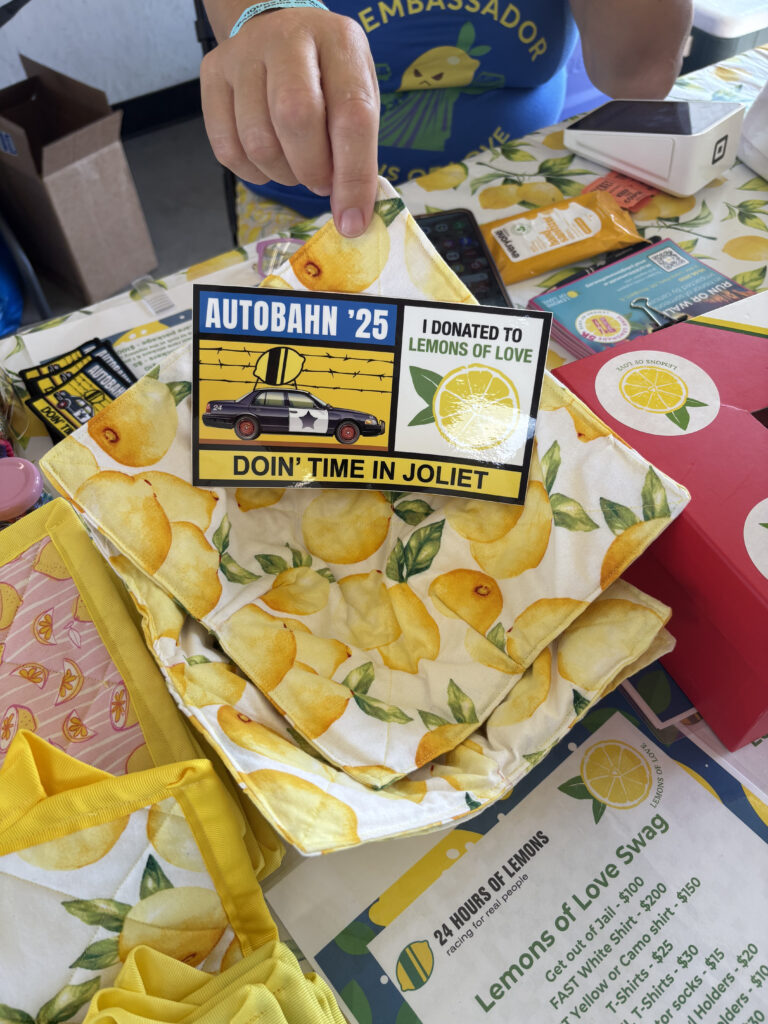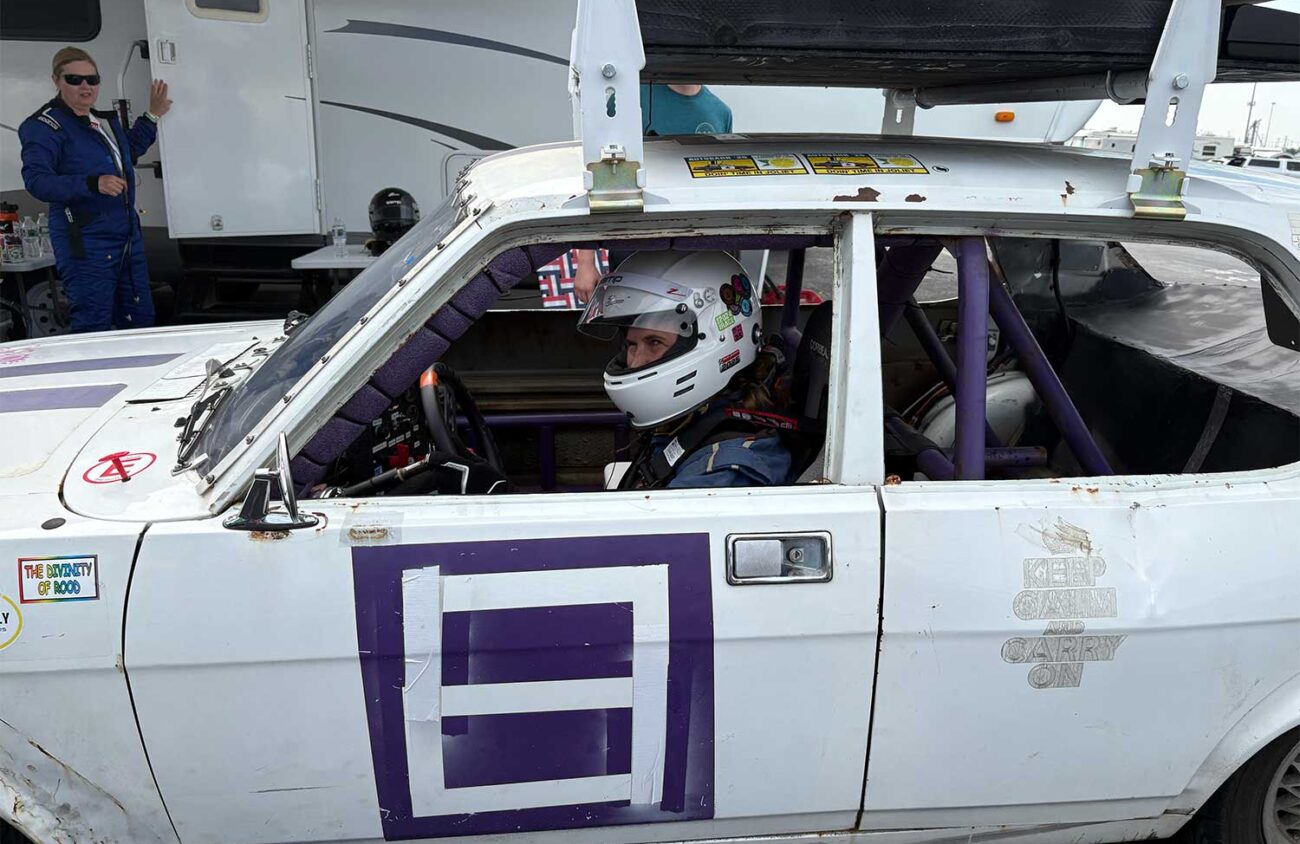I clutched the steering wheel — my hands dutifully at 10 and 2 o’clock — and stared through the bug-spattered windshield at the race track in front of me. The engine puttered along, and I smelled rubber on the road, oil and a whiff of a hot transmission. The whine of engines sounded like the Indy 500 around me, but I’m pretty sure I barely went 40 mph.
“Drive faster, Camilla!” I dimly heard the race team captain say into my radio headset over the sounds of the track. “You drive on the freeway, don’t you?”
How did I get here, at the Autobahn Country Club in Joliet, Illinois, driving around a 2.1-mile track in a car without power steering? I’m in a 1973 Morris Marina, considered one of the worst cars ever made, and there’s a piano strapped to the roof.
All I needed to do was not crash, not overheat the car and not do anything stupid — like catch fire the way a red 1993 Honda Civic painted with snowflakes did the day before.
I was part of a team of motley racing rookies seeking a prize — or simply to finish — in an endurance race called the “24 Hours of Lemons.”
Not the 24 Hours of Le Mans, the prestigious endurance car race in France that makes up the “Triple Crown of Motorsport,” together with the Monaco Grand Prix and Indianapolis 500.
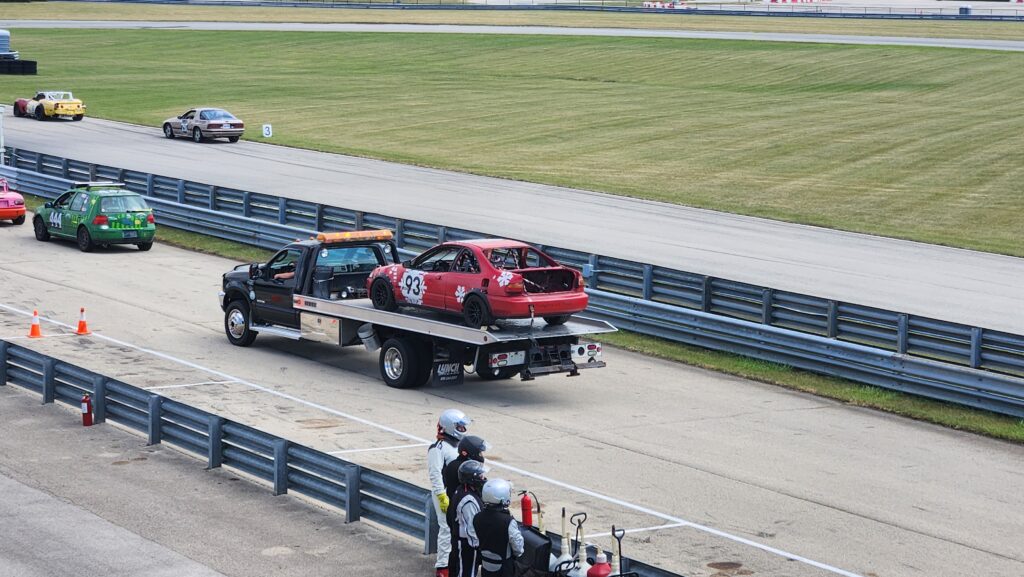
The 24 Hours of Lemons is a quirky race for racers whose cars — including improvements — are worth $500 or less, but are dedicated to their sport. Fellow racers included the 1997 Subaru Impreza of team “S.H.I.T.box brought to you by DFM” and the 1993 Honda Civic of “Heel and Toe Failures.”
24 Hours of Lemons started at tracks in California in 2006 and has expanded ever since. There are two dozen races scheduled for this year alone, including one in August in Kent, Washington. And four more Lemons Rally road events are on the agenda this year — including one in Oregon. Race entries range from about 45 to 145 cars, depending on the region. Rallies are usually smaller with about 25 cars per event or as many as 70.
Lemons also hosts people “deliberately making performance cars worse as either some kind of automotive trolling or just answering the eternal question of ‘What if we did this dumb thing?’” according to race organizer Eric Rood.
Rood is the “everything bagel” (his actual job title because he does a little of everything) of 24 Hours of Lemons. He says the goal is for drivers to go home with nothing more than scraped knuckles, so there is a “pretty rigid standard of safety.” That includes a rollcage in the car, a five-point safety harness, fire-retardant driver gear, a certified helmet with a neck restraint and more.
The safety modifications are not included in the $500 limit. So when you factor in the rollcage and fire suppression equipment, it probably costs $3,000 to $5,000 to get a race car going. (Duly noted, a Formula 1 car can cost more than $15 million and a Next Gen NASCAR is at least $225,000.)
As the 24 Hours of Lemons puts it, “Racing’s not just for rich idiots. Racing’s for all idiots. (This includes you.)” And as it turns out, me.
Somehow the Morris Marina manages to be both safe and dubious. There’s the system for extinguishing fires, but also what appears to be a lot of pool noodles for padding, and I’m somewhat concerned that I might push the button that detaches the steering wheel.
The team I’m on, like other folks I see at the race, is a mix of young and old. It’s gear heads who can talk engines for days as well as folks who have a sense of humor, a slight yen for speed and who enjoy hanging out in lawn chairs in between laps.
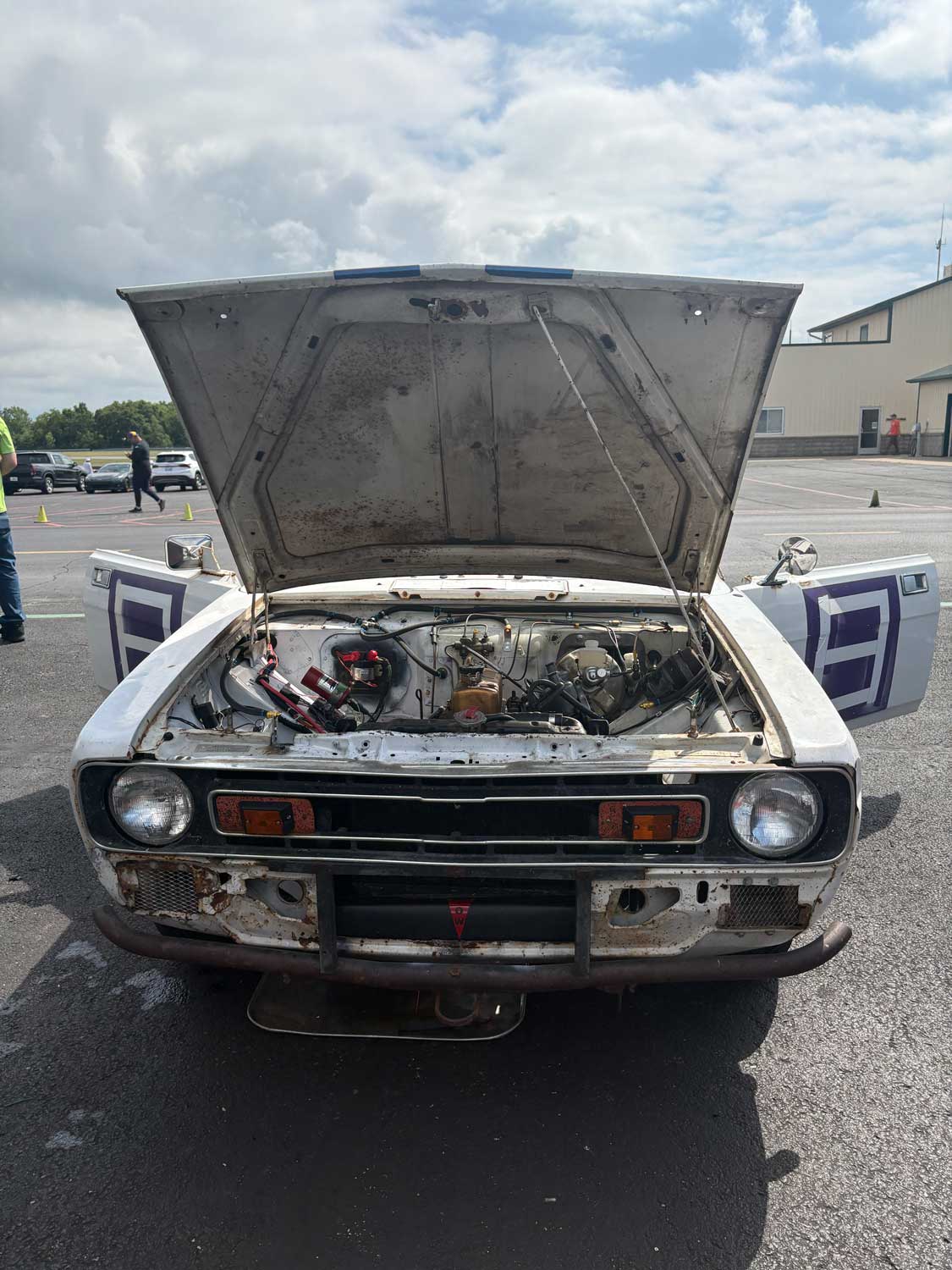
Bottom Gear
Bottom Gear is the brainchild of JR Schrage and Jeff Stobbs, longtime friends living in the Midwest who share a sense of fun and a debatable sense of humor.
Schrage tells me, “I heard about it when it first started, almost 20 years ago now, and I was like, ‘Oh, terrible cars doing things on race tracks. Sounds like fun.’”
The team name is a play on the British TV show Top Gear, an automotive-themed show with comedic elements. The show’s hosts have held up the Morris Marina, produced in England in the 1970s, as the epitome of a bad car.
Schrage says of Top Gear and the Marina, “As far as they were concerned, it was the beginning of the downfall of the British auto industry, because it is the most scrapped car in British history. They made 800,000 to a million of them, and there are less than 1,000 of them still in existence.”
He adds, “So the one I have, the fact that it’s in the U.S. means it is probably the only one people are gonna see in person in their lifetimes. OK, it’s a very rare car — unintentionally.”
There’s something else to know about Lemons. It’s not just about having a really bad car, it’s also about having a really bad car with a theme and decor. As I stood on the viewing platform on the track that first day, I saw a flying pig-themed car, a propeller-beanie-themed car — with both car and drivers donning a brightly colored propeller — some sort of fish thing that I’m told was a Pokéman, a McDonald’s Grimace theme, complete with a mascot in a purple Grimace costume and more.
The Top Gear hosts had a running gag of smashing Marinas by dropping pianos on them. The Morris Marina I drove had a piano strapped to the roof — that actually worked. Ludwig, the 9-year-old son of my old friend Linda Fraunhofer, Schrage’s sister, played the piano before and after the race, standing on the back of the car and dressed like a character from Top Gear.
Stobbs and Schrage started off in Lemons road rallies rather than races. He and Stobbs — and a Cadillac limo they then drove — discovered “the Lemons Rally is kind of like a scavenger hunt that goes throughout the country, and we come up with goofy checkpoints and have people do goofy things.”
Stobbs is now a rally master and is currently organizing the “Cascades of Failure,” which runs August 8 to 10 from Tacoma to Madras to Astoria and back to Tacoma.
He says, “You score points for how bad your car is, how many of the checkpoints you reach and more or less how much of a good time you have. There are winners on points, but most people are just there to have a good time, which is also true of the racing.”
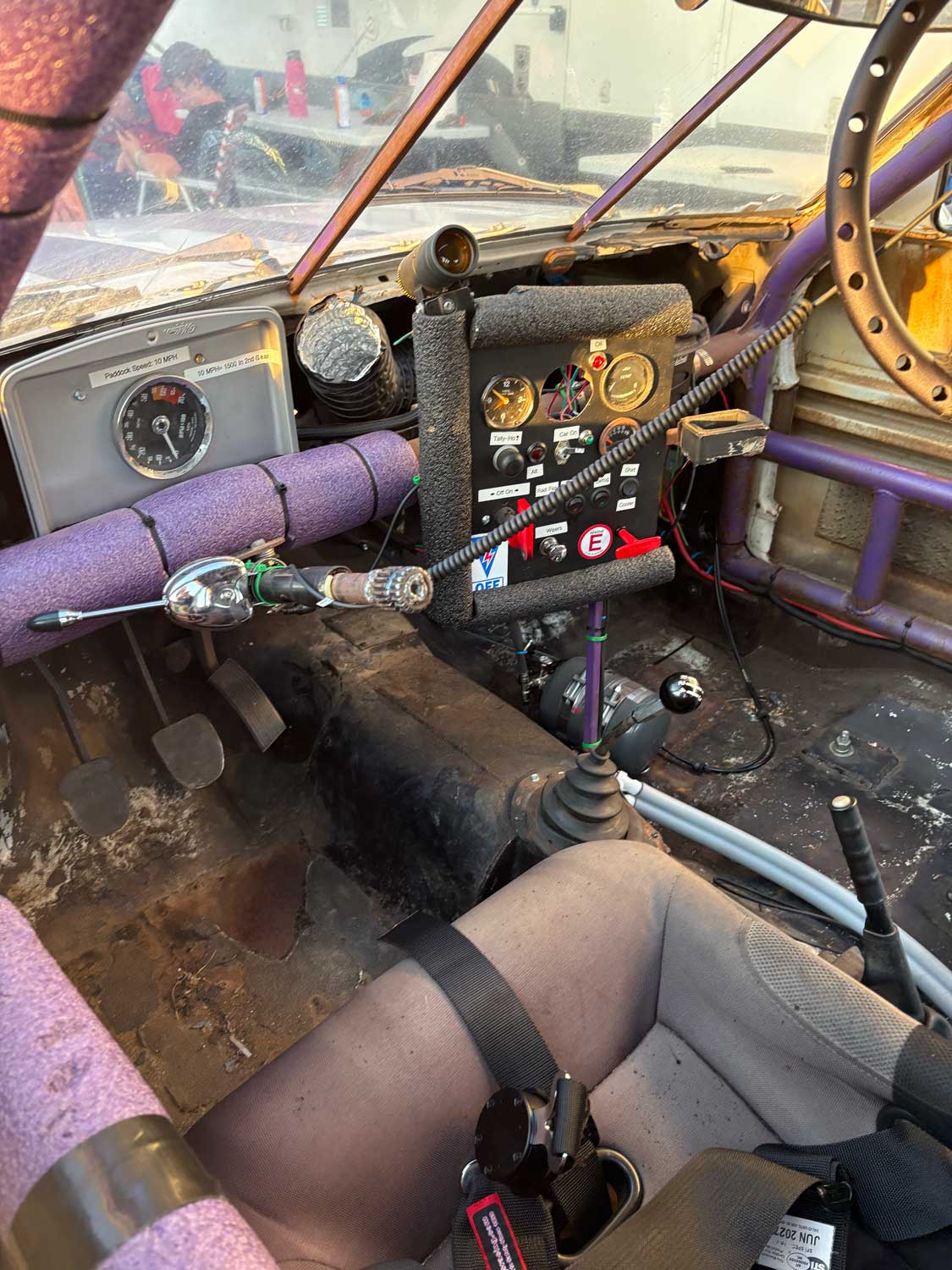
The Race is On
The name of the game in a Lemons race is laps. The race — Doing Time in Joliet 2025 — doesn’t actually go 24 hours straight. It ran from 10 am to 6 pm on Saturday, and again on Sunday from 9 am to 3:30 pm.
The trick is to keep the crappy car running, so you drive laps, go back to the “pit” (aka the spot in the parking lot your team is set up in) for maintenance and a driver change, then head back out. Rookies like the folks of Bottom Gear, including me, tend to drive about a 30-minute shift.
Rood explains that there are actually three racing classes, or levels, running at the same time. He says the classes are set by what he calls the “descending likelihood of, uh, capability.”
The classes are A, B and C, which Rood says were originally based on Prayer of Winning, Prayer of Finishing and No Prayer of Finishing. Judges placing cars for awards in the bottom class, he says, are affected by the car’s theme and “how terrible their car is.” (Notably, the prize money in the top class is $400. For cars racing in the No Prayer of Finishing class, it’s $600.)
He says one team, Bad Decisions Racing, has had a 1990s Chevrolet Camaro for a few years and put a series of very slow engines in it. At Joliet, the team plunked in a “1960s Soviet engine that they found for sale in a dusty warehouse in Chicago.” Bad Decisions won the Judges’ Choice award.
The pre-race “BS inspection” also tries to suss out people who spend far more than $500 to soup up their cars. Organizers encourage racers to show how they arrive at their $500 limit “through spreadsheets, budgets, receipts, pictures of money changing hands because you can also sell parts off the car to offset the limit,” Rood says.
“At the end of the day,” Rood adds, “the purpose is to keep people from showing up with a car that doesn’t fit the point of the series and having them punch down at people who maybe just learned how to drive stick 10 minutes before they went on the track.”
Some of our team resembled that remark.
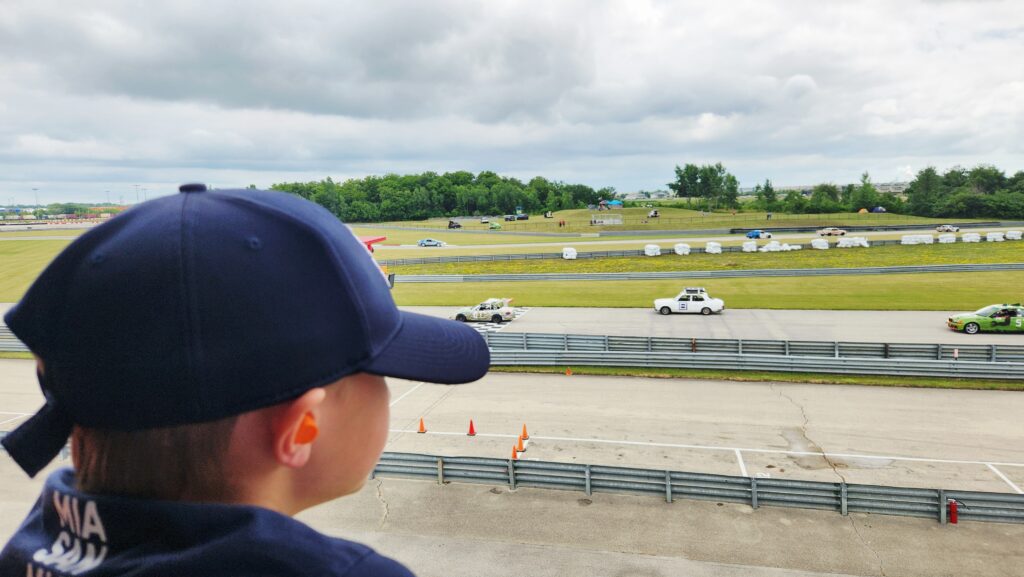
There were somewhere between nine and 13 of us making up Bottom Gear — depending on if you count the folks who didn’t wind up driving and the judge who jumped in for a couple laps. Schrage is the guy who keeps the terrible car going; Stobbs is team captain.
With the help of Fraunhofer, they pulled together the rookies for the race in Joliet, including grandma and grandpa Schrage (who had some sort of demolition derby history in his background), Linda’s German husband Wolfgang, Stobbs’ 19-year-old son Abel Stobbs, and several Schrage cousins from Iowa — who as it turns out, were enthusiastic but didn’t really drive stick — which is where I came in.
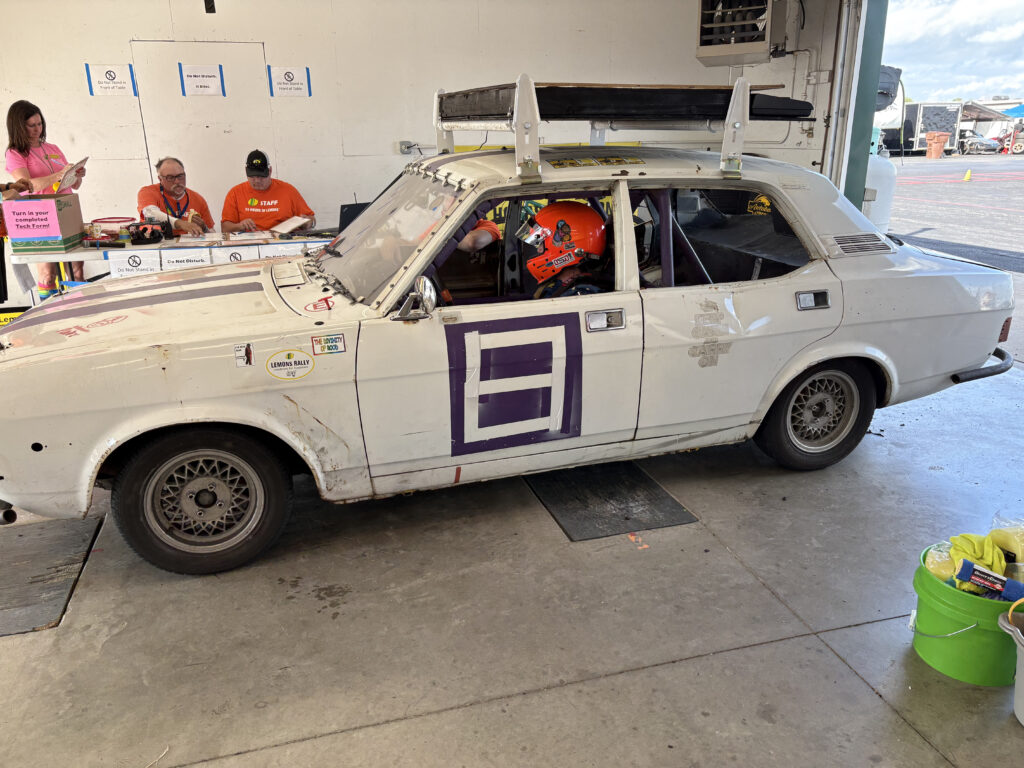
I had come to Chicago for work, to visit Fraunhofer and to watch the family’s day at the races. I instead let slip that my last car was a stick shift Fiat — at least one of which I saw racing that July weekend — and next thing I knew, I was on the roster.
Luckily, I fit the gear of one of the non-stick-shift-oriented drivers that had been rented for the occasion. I pulled the smudged, slightly worn blue fireproof suit over shorts and cooling shirt. Tubes from the shirt came out through the bottom of the zipper to connect to a cooler of ice water that sat in the car with me. Fire-resistant gloves, socks and shoes, plus a heavy helmet, neck protection and ear phones completed the get up.
I then had to climb in through the window, Dukes of Hazzard style, made easier by the detachable steering wheel. The dashboard was bare bones, but I was soon oriented to the temperature gauge (not overheating the Morris Marina was a key to success), the fire suppression system and the button marked “Tally Ho!” that started the engine.
I was the first of our team to drive on Sunday, but I started after the more competent drivers to avoid overheating the Marina while waiting to get onto the track.
I was disconcerted to get in the car in a full race suit and get thoroughly strapped in, and realize I was limited by the helmet and safety gear on how much I could turn my head or move at all. I could barely see the gear shift — just as well since I needed my eyes on the track.
I was also disconcerted to realize that I had volunteered to drive onto the racetrack in a car I had only driven once around the block. I puttered through the “paddock” as the parking and pit stop area is called, and down through the hot pit where cars stopped to fuel up.
I am notorious for being a slow driver. I was pulled over on the freeway once, and my boyfriend sitting next to me asked, “Are you getting nailed for driving too slow?” But Fraunhofer pointed out to me that the fastest laps in a Morris Marina are not always the best laps, because the car is old, rickety and there’s that tendency to get overheated.
I did not come close to overheating, but the sounds of cars whizzing by, tires screeching and the feel of being in an actual car race was worth my driving through the hot pit, pulling up for the safety check and exploding onto the track.
By exploding, I mean slowly shifting from first to second to third and then trying to stay out of everyone’s way. Fraunhofer, who had driven the day before, advised me “be predictable” so as not to get in the way of the faster cars.
The headset I wore was only one-way — they could talk to me but I couldn’t respond. I could, however, stick my arm out the open window to gesture, which seemed like a poor idea in a race car. I finally sped up a little — mostly because I was mildly convinced I was going to get clipped by one of the cars whizzing around me on the corners. I stayed to the right, while more experienced drivers maneuvered to pass and keep the best line through the curves.
The race communicates to drivers with flags posted along the course at numbered stations along the way — black means get off the track, red means stop and so on. I was so convinced I was going to screw up that I almost mistook the station 8 sign for a flag saying that me, in the little white car with the purple No. 8, needed to get off the track.
As for getting off the track, you had to exit left after a curve, which meant getting across the 40-foot-wide track after I had doggedly stuck to the right the entire time. “OK, Camilla, you can pull out after this lap” I heard in my headphones. Easier said than done as what seemed like 15 cars whizzed by.
Stobbs could see I was getting cut off. “OK,” he said into the headset, “go another lap.”
Feeling emboldened — and almost done — I am sure I hit at least 40 mph that last lap. I doggedly stuck my arm out the window to indicate I was heading left, and slowly cruised into the hot pit and then back to our site. At that point, I was grinning wildly despite a helmet that was supposed to fit tight enough to make chewing gum uncomfortable.

The top team, “Lemonaid,” driving in a 2000 BMW 323, clocked 439 laps. Of the 87 cars signed up to race that weekend. Bottom Gear finished in 67th, making it around the track 188 times.
Despite — OK, maybe because of — the crappy car, the piano, the motley crew, team Bottom Gear didn’t just finish, we won an award. And team Bottom Gear is also, somehow, the top in the Midwest regional standings.
In the end, Abel Stobbs was our fastest driver, with a top lap speed of 2 minutes 23 seconds, reflecting the team’s overall top speed of about 52 mph. Abel — who had also suggested I wear cotton under my suit because “it doesn’t melt if you catch fire” — told me he’d never driven a stick faster than second gear before the race.
Abel also got clipped by another racer. “If I hadn’t been spooked by another car diving for the inside line on the turn, I would’ve seen the guy and braked,” he says.
We won what Jeff Stobbs tells me is the top award — the Index of Effluency, which 24 Hours of Lemons says is “determined by a super-secret equation including vehicle age, general hooptieness, reliability of country of origin, unlikelihood of success and the organizers’ whim.”
“You need to realize,” he tells the team, “rookie teams don’t win stuff.” He also tells us we were the slowest team to win that award at the Joliet track.
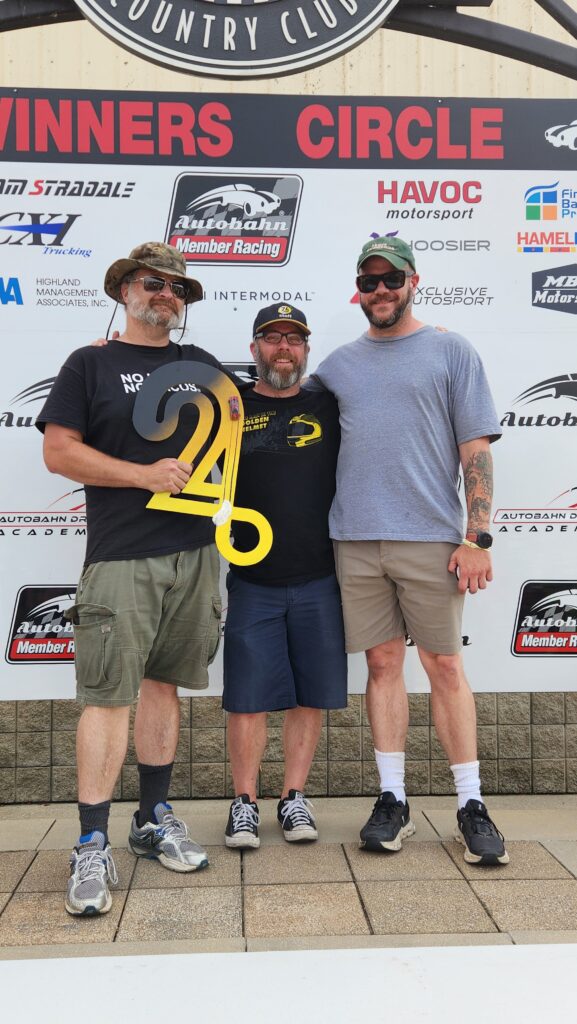
“Team Ho Ho Ho,” whose car caught fire again on Sunday, won the “I Got Screwed” award.
Stobbs and Schrage have plans for team Bottom Gear. They’ve got a lead on a Jaguar XJ6 already fitted with a rollcage. An XJ6 is still a slow car, but “would give us the ability to feel like we aren’t in an asteroid field being assaulted by hyper sonic missiles,” Stobbs says.
Hell, we might even drive 55. Squeeze me in.
The 24 Hours of Lemons is coming to the Northwest next month. The race, Smells Like AMC Spirit 2025, is at Pacific Raceways in Kent, Washington, August 30 and 31. Up for a rally? The next Pacific Northwest Lemons Rally, Cascades of Failure Rally 2025, is August 8 through 10. Enter your lemon by August 1. Want to know more? Go to 24hoursoflemons.com.
